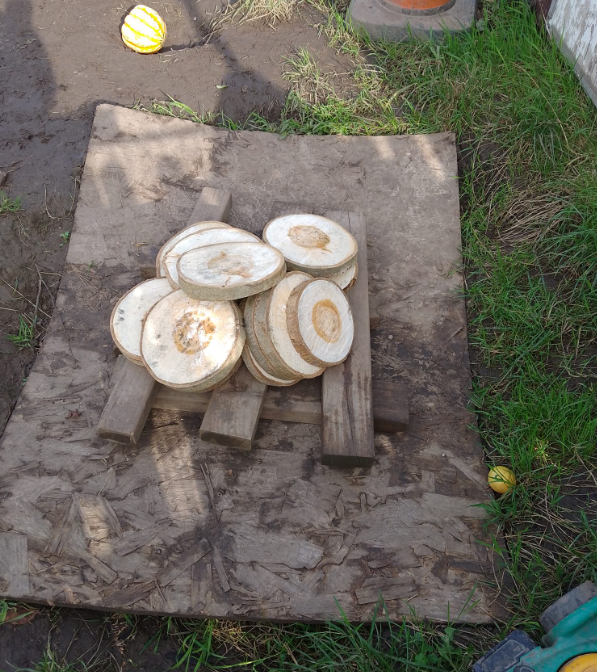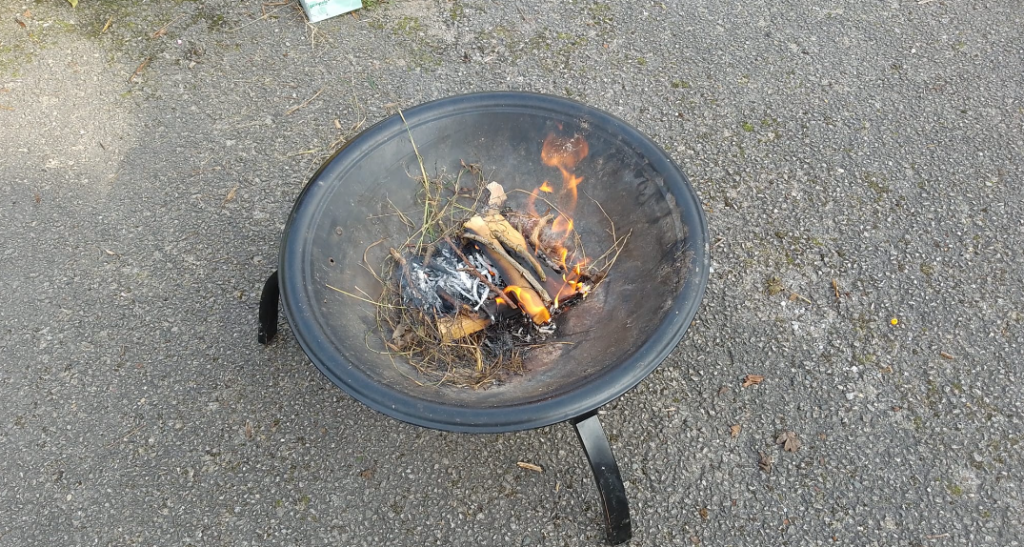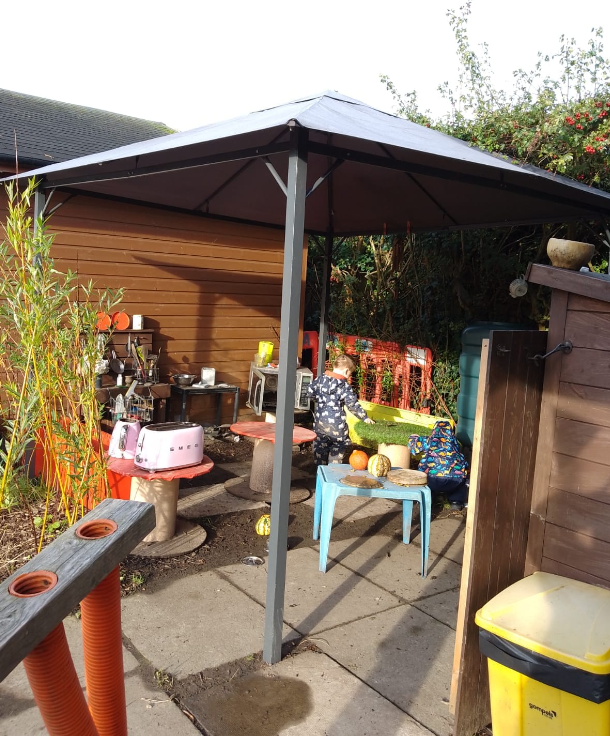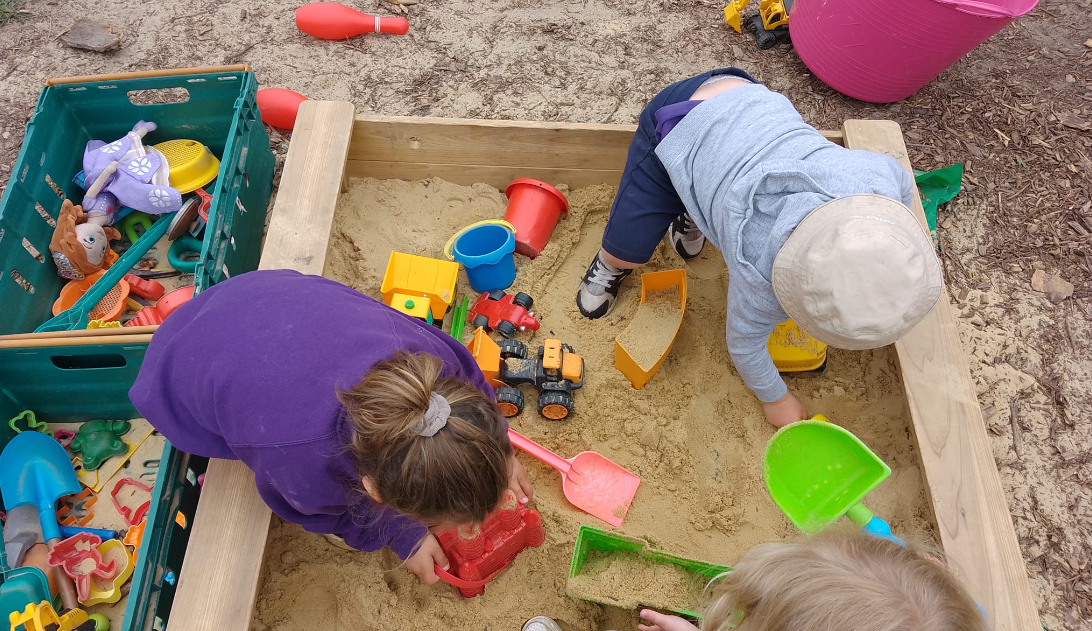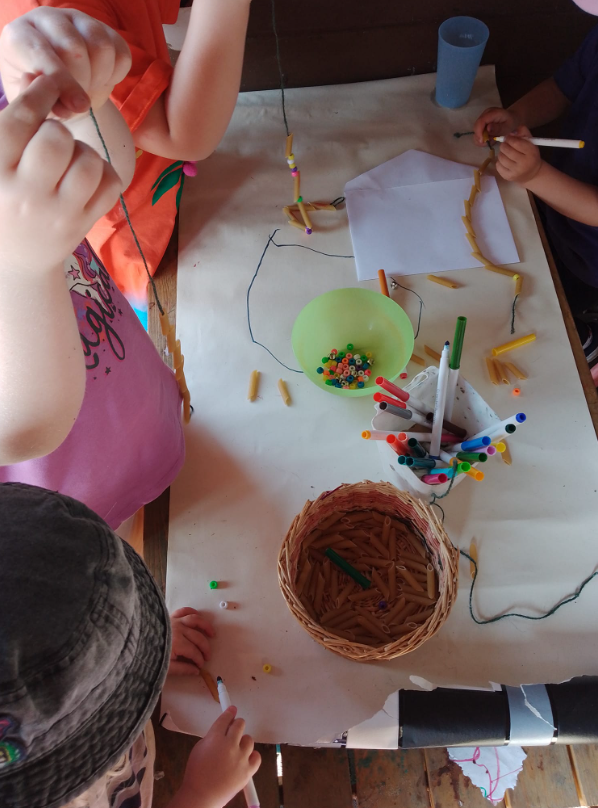We’re always trying to find new and fun items the children can play with. The thing is, we never quite know how they’ll end up playing with them.
This morning, our Fairy Grandma, Karen, brought in some logs and we put them in our outside environment, stepping back to see what would happen. The children have such incredible imagination, you never can tell what they’ll come up with.
A small group of boys spotted the logs and instantly thought about making a campfire, stacking them up and asking for marshmallow toasting sticks to toast some pretend marshmallows.
We spent some time chatting and reminiscing about fires. Some children said they had real fires at home or a grandparent’s house.
The activity escalated and we ended up setting a real fire in a fire pit. It was the perfect opportunity to teach the children about fire safety, and they kept a good distance from it, seated on their benches.
We used some flint and steel to get the fire going, which was very exciting, and our expert Heather led the activity. We sang some songs, pretended to be fire officers and made some stick men.
All in a morning’s work at Pre-School!
How to teach children about fire safety
As our children get older, it’s so important to start teaching them about safety in general, but also fire safety.
The best way to do this is by example, which is exactly what our pre-school activity demonstrated.
It’s important that you let your children see how you react around fire and how careful you are around it so they can learn to do the same. They are drawn to the warmth and light of fire, but don’t yet understand that it can burn and hurt when touched. This is why we stressed the importance of keeping a safe distance and not touching it.
There are some other ways you can teach them about fire safety too:
Talk to them
You can regularly talk to your children about the dangers of fire, telling them what is acceptable and what isn’t. For children under five, you should explain that mummy and/or daddy should always deal with fire, such as lighting candles, cooking in the kitchen, etc.
Tell them that they shouldn’t:
- Try to light a fire themselves
- Play with matches
- Leave toys close to a fire (such as a log burner)
- Mess with electrical appliances or sockets
- Touch any pans on the hob or the kettle
You should also ask that they tell you if they see matches left unattended.
Prepare them
While it can be a scary topic, it’s a good idea to discuss what your children should do if they see a fire. They need to understand how to react or how to get a grownup’s attention quickly.
Explain what they should do if they see smoke or flames. This could include telling a grownup and getting out of the building as quickly as possible.
Most children when they’re scared will find somewhere to hide, such as under the bed or in a wardrobe. You should stress to them that this isn’t a safe option, and they need to get out of the building instead.
If they have access to a phone, you should teach them how to dial 999 and request an ambulance. Ensure your children can recite your home address should they ever have to use it.
Give them an escape route
Children aren’t mentally developed enough to be able to determine the safest exit route, so it may be best that you suggest one for them. Create an escape plan and make sure everyone in the house knows what it is.
The best way to avoid a fire at home is to put certain measures in place that will reduce the risk. You could keep matches and lighters out of reach, put fireguards in front of open fires, switch off any electrical appliances that aren’t in use and ensure children are never left alone in the kitchen, especially when you’re cooking.
Regularly test your fire alarms too. A working fire alarm will give you extra time to get out and could save your life.


